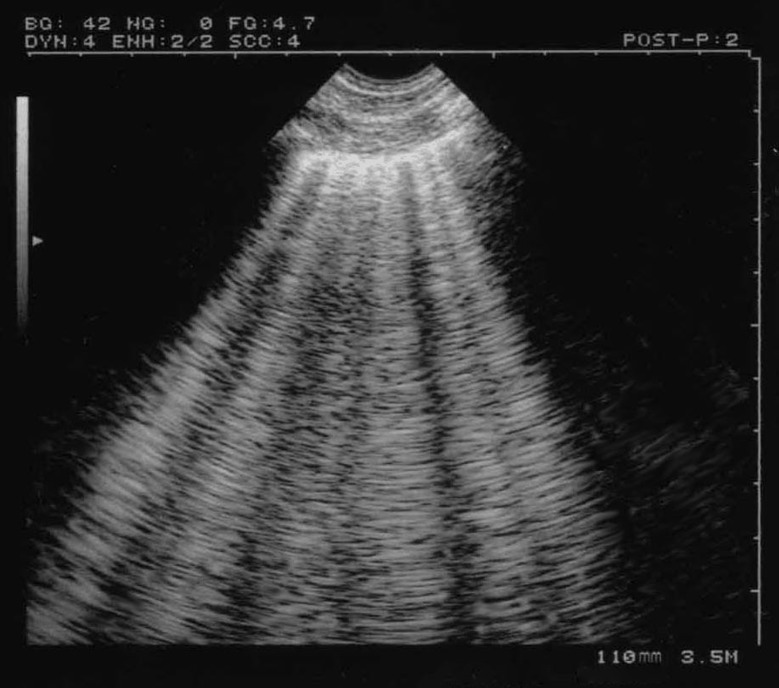Figure 6.
Interstitial syndrome and lung rockets. This figure presents most of the criteria of the B-line (the elementary sign). The B-line is defined using seven criteria, three of which are always present: a comet-tail artefact; arising from the pleural line; moving in concert with lung sliding (when lung sliding is present). The other four criteria are almost always present: long; well-defined; erasing A-lines; hyperechoic. This definition works in all situations and avoids confusion with other comet-tail artefacts that are not B-lines. The resulting sign, lung rockets, indicates that more than two B-lines are visible between two ribs. Three or four B-lines make the pattern called septal rockets and correlate with Kerley’s lines (subpleural interlobular septa). Five or more (the maximum seems to be 10) make a pattern called ground-glass rockets, as they correlate with ground-glass lesions. It is easy to count here six B-lines, a pattern correlating with ground-glass lesions on computed tomography. Lung rockets indicate interstitial syndrome.

